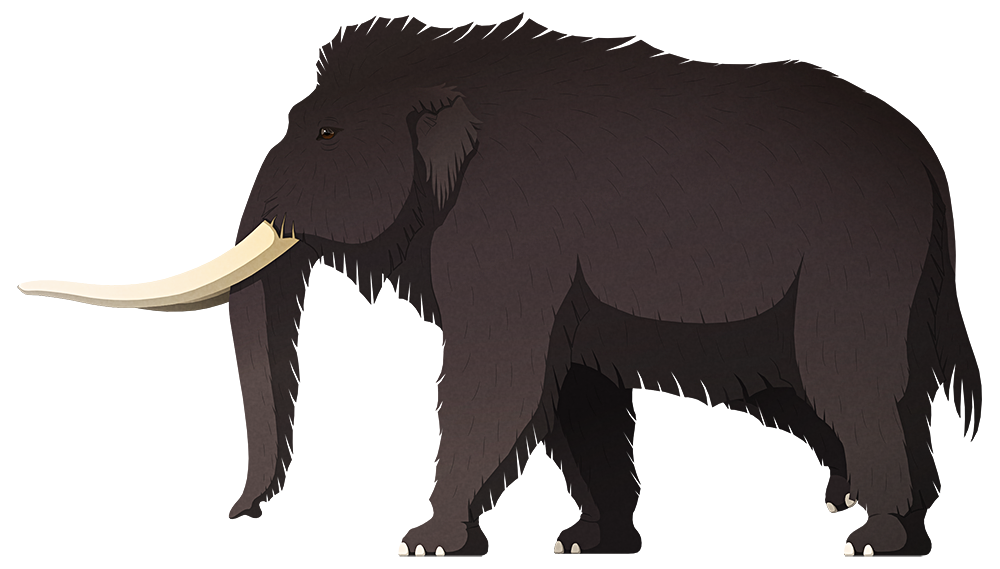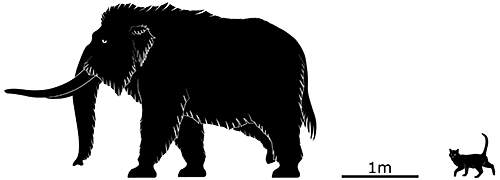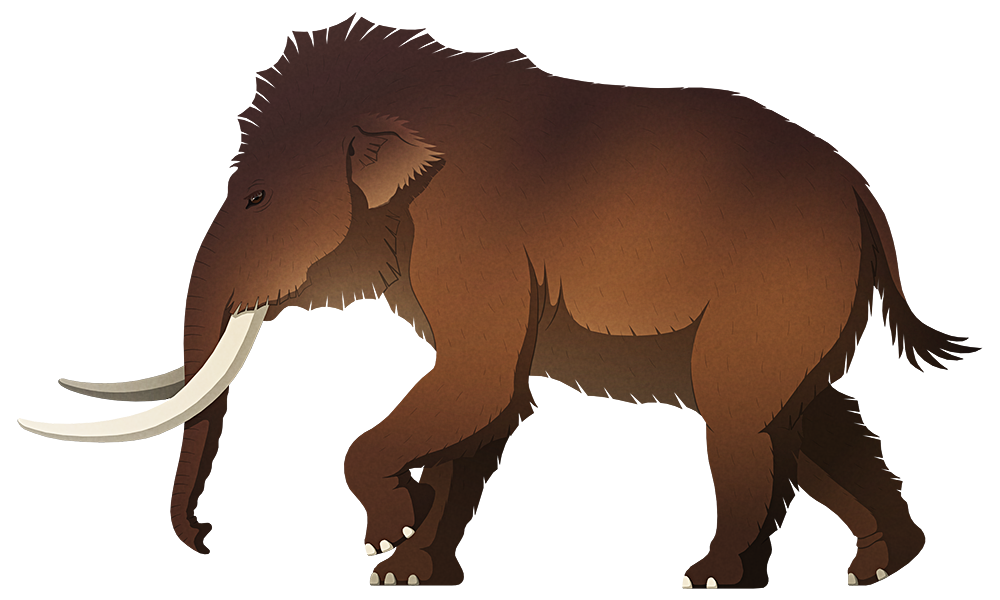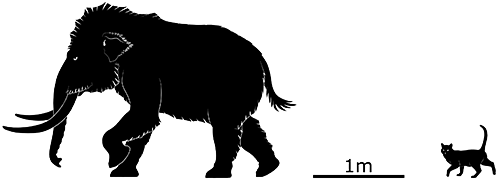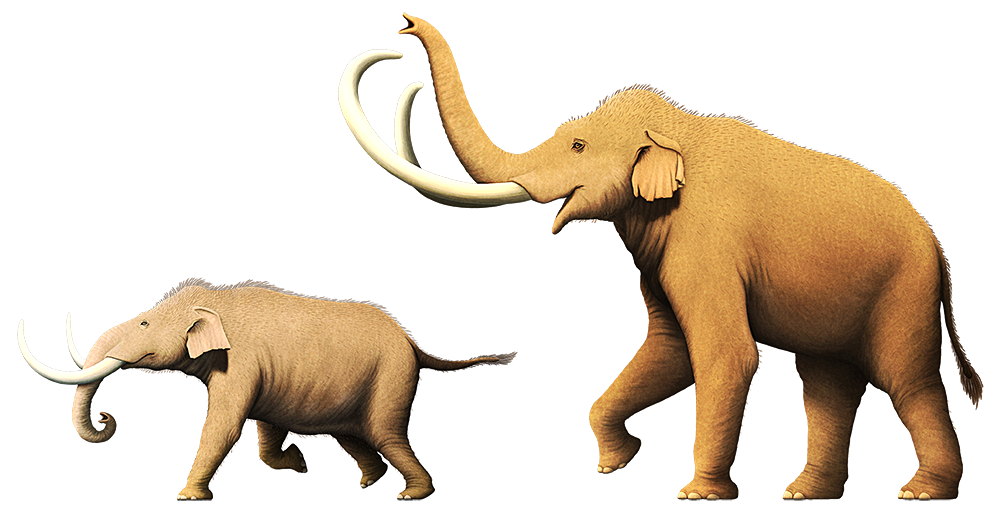Alongside the weird deer, otters, and owls, the island of Crete also had dwarf elephants — and much like Sardinia to the west the Cretan elephants were actually descendants of mammoths rather than the Palaeoloxodon seen in the rest of the Mediterranean.
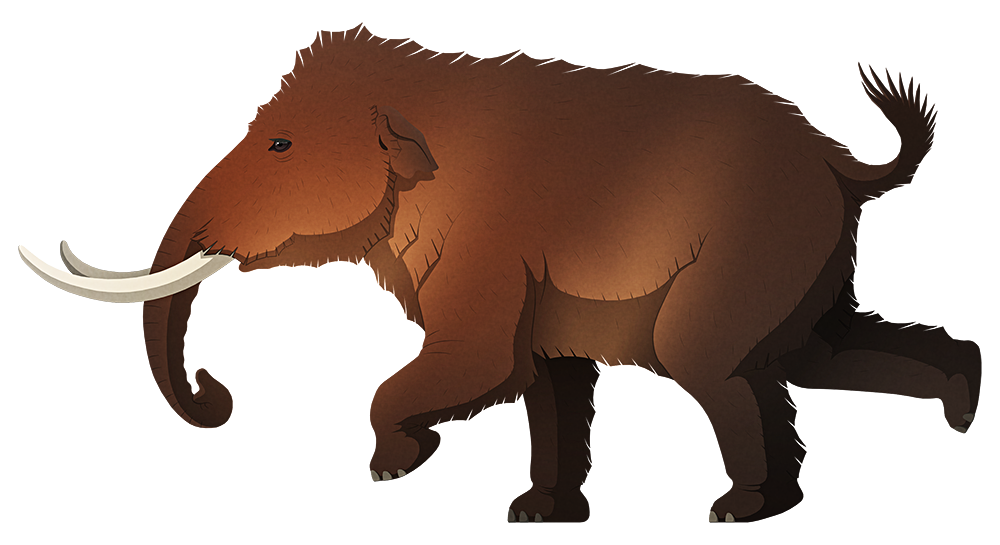
Mammuthus creticus was originally thought to also be a palaeoloxodontine, but more recent studies of its anatomy and ancient DNA have confirmed it was indeed another tiny mammoth. It was probably descended from either the Southern mammoth or Mammuthus rumanus, which would have arrived on Crete during the late Pliocene or early Pleistocene between about 3.5 and 1 million years ago.
Isolated on Crete, with no predators and living at a time when the island was much smaller, it quickly dwarfed and became the tiniest known mammoth to ever exist, standing just 1.1m tall at the shoulder (3’7″). Not much is known about its ecology, but its teeth suggest it was a browser feeding on leaves and shrubs, possibly filling a similar niche to the mid-sized deer that came later.
This mini-mammoth seems to have gone extinct by the mid-Pleistocene, about 1 million years ago, around the time when rising sea levels during an interglacial phase may have submerged so much of the smaller proto-Crete that its population could no longer be supported.
Later in the mid-to-late Pleistocene, after the sea level dropped again and tectonic uplift brought Crete close to its modern dimensions, the small mammoths were replaced by both newly-arriving deer and Palaeoloxodon elephants, which evolved into the much more moderately dwarfed forms of Palaeoloxodon creutzburgi and Palaeoloxodon chaniensis.

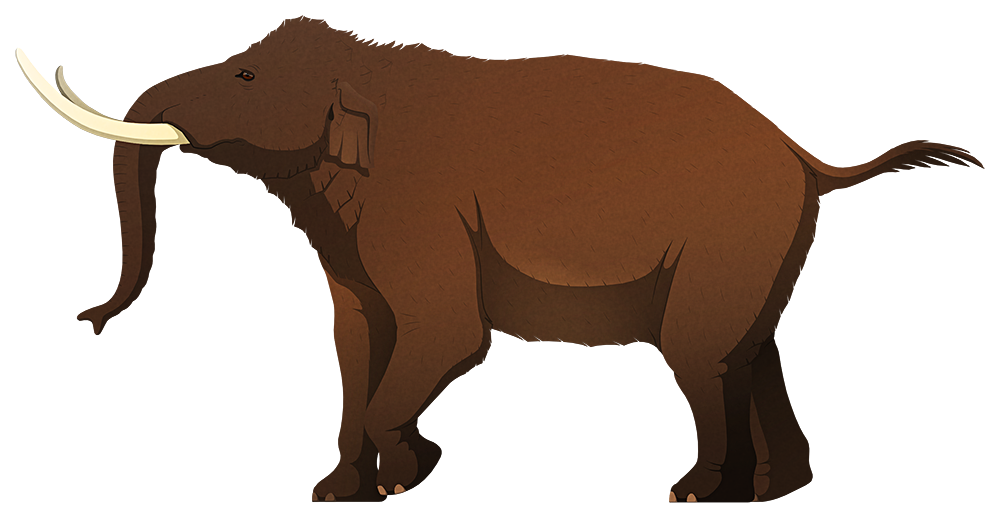
To the north and east of Crete the Cyclades and Dodecanese islands had endemic dwarf elephants on at least eight islands, with the best known being the species that lived on Tilos.
Palaeoloxodon tiliensis stood about 1.8m tall (5’11”), on the larger side for a dwarf Mediterranean elephant but still one of the smallest palaeoloxodontines in the Aegean region. Several thousand specimens have been found, and radiocarbon dating shows it was a fairly recent evolutionary development, appearing just 45,000 years ago in the late Pleistocene.
This dwarf elephant was also the very latest surviving of its entire kind, living well into the Holocene until at least 4000 BCE. This is several thousand years after humans first arrived on Tilos, suggesting it was a rare case of an island elephant that managed to endure the effects of a human presence for quite some time.
In fact there’s some speculation that Palaeoloxodon tiliensis (or a similar unknown species) may have survived for even longer than that, since one Ancient Egyptian tomb from around 1480-1400 BCE contains a painting depicting traders with exotic animals, including what appears to be a small hairy elephant with slender limbs and thin upward-curving tusks. We may never know for certain if this was actually a late-surviving dwarf, a mutant modern elephant, or just artistic license with scaling, but the possibility is still intriguing.
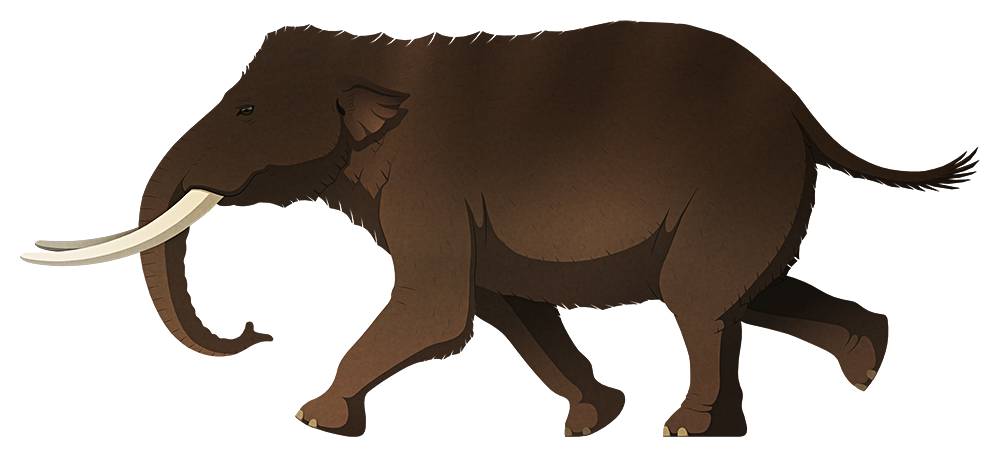
Over on isolated Cyprus further to the east, the only native large mammals were the miniature hippos and an equally miniature elephant.
Palaeoloxodon cypriotes was smaller than the Aegean palaeoloxodontines, about 1.4m tall (4’7″), and much like its cousin on Tilos seems to have evolved very recently towards the end of the Pleistocene, sometime around 20,000 years ago.
It wasn’t the first dwarf elephant on Cyprus — there was a larger, earlier species known as Palaeoloxodon xylophagou at least 200,000 years ago — but it’s not clear whether these two species represent a single evolutionary line or two entirely different colonizations of the island.
Similarly to the hippos it lived alongside, Palaeoloxodon cypriotes disappeared shortly after humans arrived on Cyprus, between 12,000 and 10,000 years ago. Collections of its bones have been found in a rock shelter with evidence of having been burnt, suggesting that it was being actively hunted and cooked.

And that’s all for the Island Weirdness series! Even over two months there are still plenty of species I didn’t have time to feature, so this definitely won’t be the last we see of strange endemic species.
Thank you for following along — with a shoutout to my Patreon supporters! — and regular weekly art posts will resume here next Monday.



